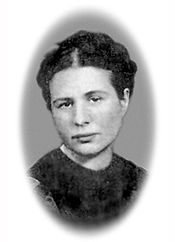
Wikimedia Commons
I think that we can all confidently say now that there will be no more new scientific discoveries. The data are all in. The fundamental facts are known. There will be no future changes, no surprises. It’s just a matter of filling in the details a bit, and developing some new technology.
Science is like that. Right?
Most of the grand underlying principles have now been firmly established. Further advances are likely to come by means of a rigorous application of these principles to all additional phenomena.
Listen, for example, to the words of Albert Michelson, the first American to receive a Nobel Prize in the sciences (1894), who is best remembered today for the famous 1903 Michelson-Morley experiment regarding the speed of light:
The more important fundamental laws and facts of physical science have all been discovered, and these are so firmly established that the possibility of their ever being supplanted in consequence of new discoveries is exceedingly remote. . . . [I]nstances might be cited, but these will suffice to justify the statement that our future discoveries must be looked for in the sixth place of decimals.
And indeed, after 1903, it really was just details. Like special relativity (1905), general relativity (1915), quantum physics (for convenience, 1925), Father Georges Lemaître’s proposal of the Big Bang (1927), and Edwin Hubble’s discovery that the universe is expanding (1929).
***
Winning the Nobel Prize is a remarkable achievement. But sometimes . . . umm, mistakes are made:
During the Second World War, Irena Sendler, a Polish Roman Catholic nurse and social worker, received permission to travel into and out of the Warsaw ghetto as a plumbing/sewer specialist.
She had an ulterior motive.
Irena smuggled Jewish infants out of the Ghetto in the bottom of the toolbox that she carried. She also carried a burlap sack in the back of her truck, for larger kids.
Irena kept a dog in the back of truck, as well. She trained the dog to bark whenever she approached the Nazi soldiers at the Ghetto’s checkpoints. The soldiers, of course, wanted nothing to do with the dog, and the barking covered any noises made by the children.
It’s estimated that at least 300,000 Jews from the Ghetto were killed, either within the Ghetto itself or in the extermination camps at Treblinka and elsewhere. But Irena Sendler managed to smuggle out and save 2500 Jewish children.
Ultimately, though, she was caught, and the Nazis broke both of her legs and arms, beat her severely, sent her to a labor camp, and sentenced her to death.
Still, somehow, she survived.
Irena kept a record, in a glass jar that she buried under a tree in her backyard, of the names of all the children she had smuggled out. After the war, she tried to locate any parents who might have survived and she attempted to reunite those children with their families.
Most family members had been gassed. So most of the kids that she had helped were placed with foster families or adopted.
In 2007, Irena was nominated by the government of Poland for the Nobel Peace Prize.
But she wasn’t selected.
Instead, Al Gore won.
In 2008, a Finn by the name of Martti Ahtisaari took the prize. That was the year in which Irena Sendler died, at the age of ninety-eight, in Warsaw.












